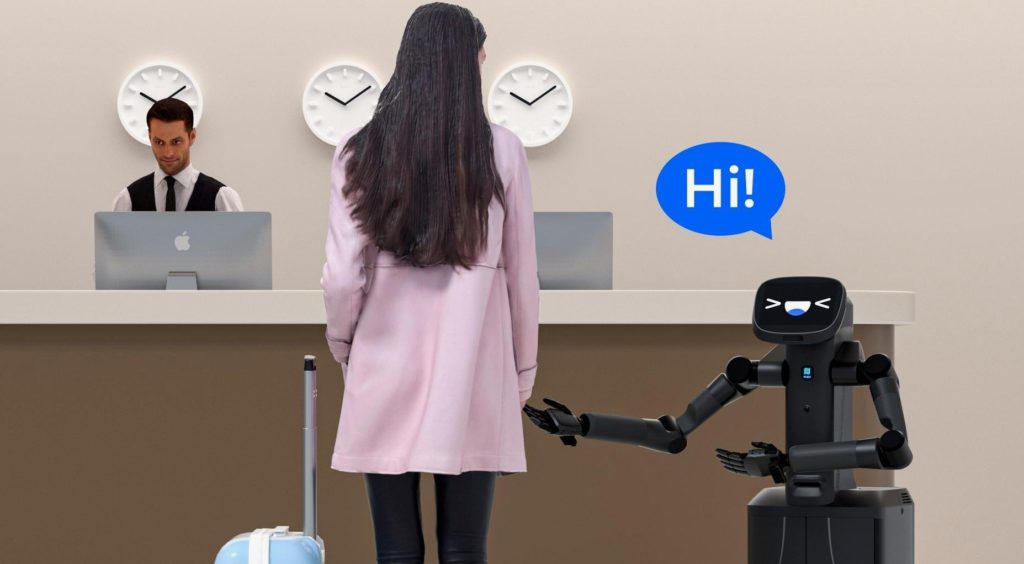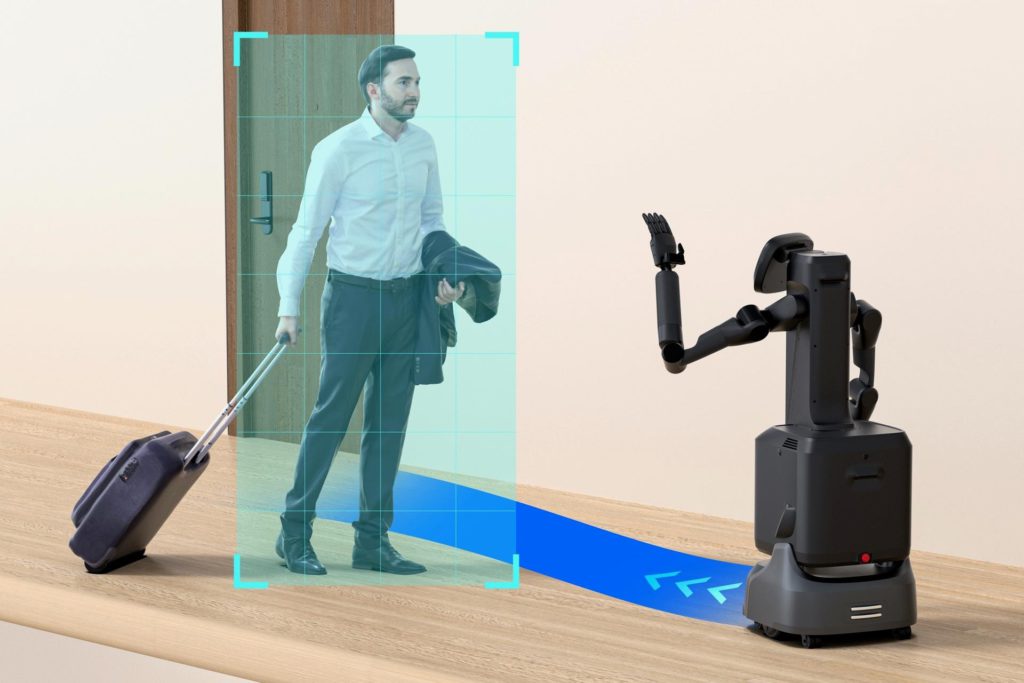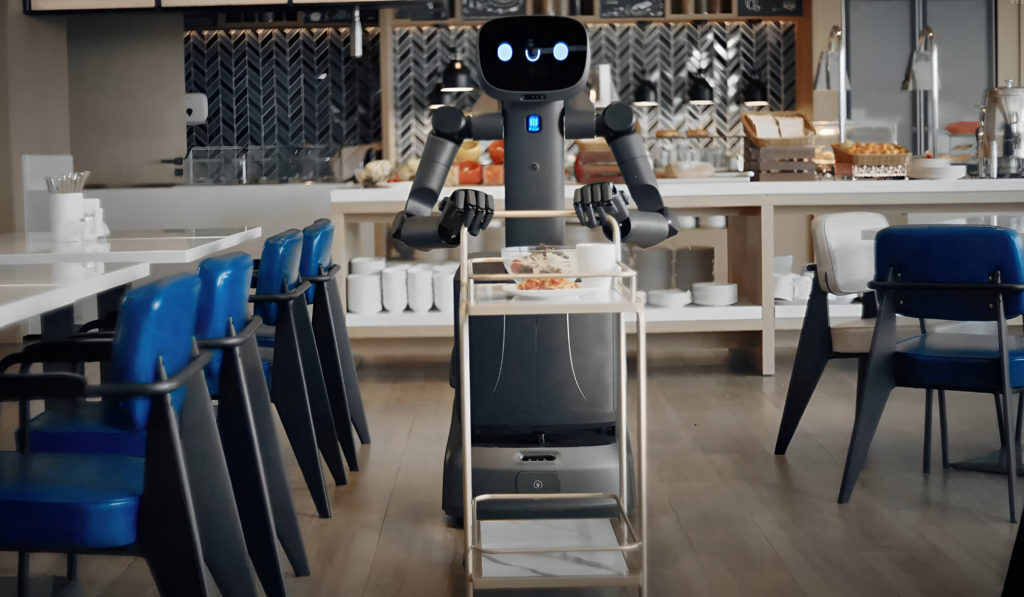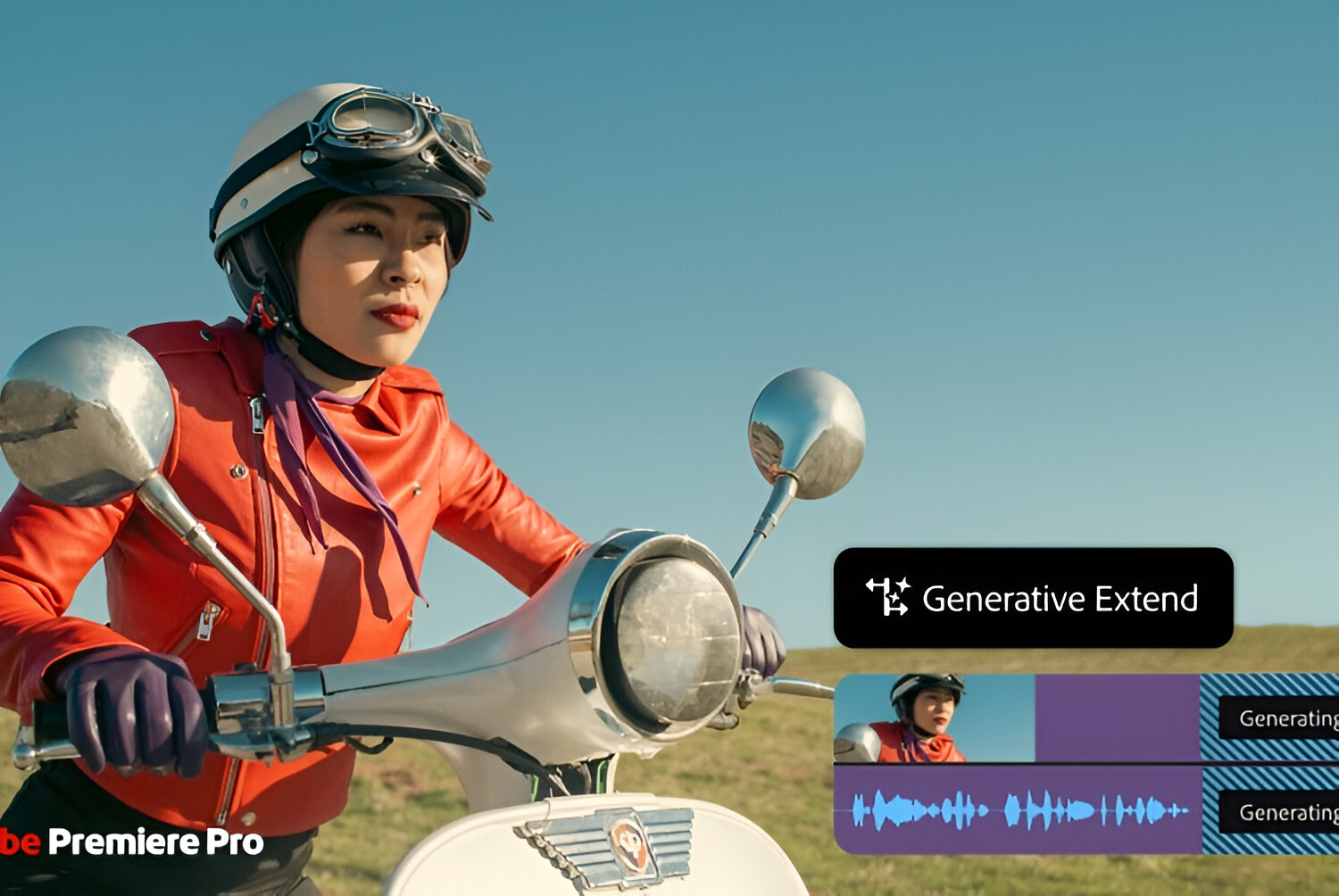Chinese robotics company Pudu Robotics has introduced the FlashBot Arm, a “semi-humanoid” robot that combines wheels with humanlike arms to create a practical solution for service industries. Unlike fully humanoid robots that require complex bipedal walking systems, this wheeled centaur-like design offers a more cost-effective approach that could soon become a common sight in hotels, offices, and healthcare facilities. Let’s explore the four key innovations that make this robot a potential game-changer in service automation.
The Semi-Humanoid Design Concept

The FlashBot Arm represents a clever compromise in robot design. Instead of attempting to recreate the human form entirely, which requires complex balancing systems and expensive bipedal locomotion, Pudu has created what they call a “semi-humanoid” robot. The design builds upon their existing FlashBot Max delivery robot (essentially a wheeled cube) by adding articulated arms and a touchscreen face.
This hybrid approach offers several advantages. The wheeled base provides stable, energy-efficient movement without the complexity of walking legs. Meanwhile, the addition of arms allows the robot to interact with the human world in ways that simple delivery bots cannot. The 10.1-inch touchscreen “face” enables the robot to display different expressions, creating a more engaging experience for humans interacting with it.
This design philosophy prioritizes practicality over perfect human mimicry. By focusing on the functions humans need most in service settings—mobility, object manipulation, and basic interaction—rather than trying to replicate human form exactly, Pudu has created a robot that could feasibly be deployed at scale in the near future.
Advanced Manipulation Capabilities

What truly sets the FlashBot Arm apart from simpler delivery robots is its sophisticated manipulation abilities. Each of its three-jointed arms features seven degrees of freedom—similar to human arms—giving them remarkable flexibility and range of motion. These arms are equipped with Pudu’s DH11 robotic hands, which themselves have eleven degrees of freedom for precise grasping and manipulation.
This combination provides the FlashBot Arm with an operational reach of up to 2 meters (6.6 feet), allowing it to perform a variety of tasks that would be impossible for wheelbase-only robots. The robot can grasp and carry objects, press elevator buttons, and even swipe card keys to access restricted areas—all crucial abilities for a service robot operating in multi-floor buildings.
In a hotel setting, these capabilities allow the robot to accept items for delivery, navigate to the elevator, press the correct floor button, locate the appropriate room, and then deliver items directly to guests. This level of autonomy could significantly reduce the workload on human staff for routine delivery tasks while providing consistent service at any hour of the day or night.
Intelligent Navigation and Environmental Awareness

For a service robot to be truly useful, it must navigate complex, dynamic environments safely and efficiently. The FlashBot Arm accomplishes this through its VSLAM (Visual Simultaneous Localization and Mapping) system, which creates a three-dimensional map of its surroundings in real time.
This sophisticated navigation system relies on multiple sensors working in concert: RGB depth cameras provide detailed visual information, panoramic cameras offer a wide field of view, and a LiDAR module accurately measures distances to objects and walls. Together, these sensors allow the robot to build a comprehensive understanding of its environment, detect and avoid obstacles (like hotel guests walking through corridors), and efficiently plan routes to destinations.
The robot’s navigation capabilities extend beyond simple obstacle avoidance. It can reportedly summon elevators, select the correct floor button once inside, and navigate between floors—a significant challenge for service robots that must operate throughout multi-story buildings. While traveling, the robot carries items in a secure lidded compartment, leaving its hands free for interaction with doors, elevators, and other environmental features.
Human-Robot Interaction and Practical Deployment

The final piece of the puzzle for successful service robots is effective human-robot interaction. The FlashBot Arm incorporates AI-based large language models that enable it to engage in basic conversations with users. People can verbally issue delivery instructions, which the robot can understand and execute through its combination of artificial intelligence and physical capabilities.
The touchscreen “face” enhances these interactions by displaying appropriate expressions, making the robot feel more approachable and less intimidating to people who may be encountering such technology for the first time. This combination of verbal communication and visual feedback creates a more natural interaction experience than typical service robots provide.
From a practical deployment perspective, the FlashBot Arm offers reasonable specifications for real-world use. Weighing just 15 kg (33 pounds), it’s light enough to operate safely around humans while still being substantial enough to carry useful payloads. Its battery provides up to eight hours of runtime on a four-hour charge when not carrying heavy loads—sufficient for a typical work shift before recharging.
While pricing details weren’t available at the time of the article, the FlashBot Arm’s pragmatic design suggests it could be substantially more affordable than Apple Humanoid and Non-Humanoid Robots. This combination of capability and cost-effectiveness could make it one of the first advanced service robots to achieve widespread adoption in settings like hotels, offices, restaurants, retail spaces, and healthcare facilities—places where its wheeled mobility and manipulative abilities provide genuine utility without the expense of perfectly mimicking human form.




























